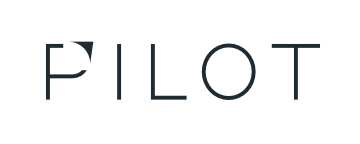Focusing DEI Learning Objectives on Leadership Development and Career Advancement
Did you know that employees who have access to professional development opportunities have a 34% higher retention rate than those who do not?
This statistic underlines two realities:
The next emerging leader at your company is hiding in plain sight.
There’s a strong chance they’ll leave your organization without access to professional development.
The situation is even starker for diverse employees. Traditional and structural challenges have meant that diverse employees haven’t always had access to the same type of opportunities as others. And yet, when they are given access to them, they thrive. For example, companies with mentoring programs that appoint diverse leaders saw an 18% increase in diverse managers over five years.
By threading DEI learning objectives into the fabric of development strategies, companies hold onto their best talent while building towards a more inclusive future. But what does this look like in practice? In this article, we explore best practices for DEI leaders to follow.
Access Leads to Action: Breaking Down the Pipeline
The first step to transforming your culture starts with fostering a level playing field. Do you know the current state of your organization? You should have a clear understanding of how DEI learning development and career advancement are intertwined.
Take steps to define the status. This will provide you with the right information for creating an action plan for employee development. Start by asking:
Where must we go to achieve our DEI goals for our current and future leadership?
What skills and knowledge do they need to hone and acquire to achieve these DEI goals?
Once defined, DEI can be built into the development you currently provide. It acts as the north star for evolving current and emerging leaders. While every organization may have slightly different goals or be in a different place in the DEI journey, all organizations should strive to meet DEI standards.
Tip: An assessment of your current state can help you to identify where to deepen and clarify an understanding of what DEI is and why it has an impact on your organization and relationships.
All employees should be included in training programs that build a DEI baseline. It is not a topic to be covered—it’s fundamental to how you think about relationships, customers, and the products or services you offer.
How do you generate action? It’s about access.
Take Real Steps Towards Real Inclusion
Next, let’s discuss how to funnel that access into development. Start by integrating baseline learning objectives that support DEI across all of your programs. Encourage your team members to utilize the following best practices:
Use inclusive language in employee and customer communications.
Apply inclusive practices throughout the recruiting and hiring process.
Create marketing and sales materials that adhere to DEI inclusivity and meet or exceed the organization’s DEI standards.
Employ accessibility standards for the design and development of content and interfaces.
Formulate and Document
As you formalize DEI learning objectives for leadership development, consider how you are assessing the individuals who will benefit from these programs. Great learning objectives fall flat when they are not delivered to the right audiences.
Unfortunately, this is a lot more common than companies would like it to be. The reality is that 51% of HR professionals admitted that their leadership selection process was unfair. For all the gains we’ve made in the modern workforce, we still have a long way to go – as illustrated below.
Source: McKinsey & Company
Ask yourself the following:
How are you identifying the employees for whom you want to provide career advancement opportunities?
Is your selection process documented and incorporates formalized feedback from managers and peers?
How well are your DEI principles reflected in your leadership pipeline?
Additional discovery to assess progress and potentially specific organizational needs should not be overlooked. Incorporating a focus on DEI within leadership development and career paths is essential. This approach focuses on preparing your future leaders to support and cultivate DEI principles.
Take these actions to make strides in meeting DEI learning objectives while creating a workplace full of opportunities:
Assess and correct interactions or communications that violate DEI principles. This means that the workplace not only acknowledges the importance of DEI but actively maintains an environment that upholds these values.
Apply DEI principles in employee development and coaching. This is fundamental in fostering a culture where continuous learning and growth are aligned with DEI.
Create success plans informed by DEI principles. These plans reflect the organization’s commitment to not just talking about DEI, but actually living it through practices and leadership development strategies.
A Better Future Built on Today’s DEI Difference
HR leaders must recognize that effective DEI initiatives aren’t simply about checking boxes by bringing in different types of people. As with anything, that’s just step one. Instead, challenge yourself to connect DEI to other initiatives, like career advancement and learning initiatives. Otherwise, you risk not only harnessing the full potential of someone’s talent – but also letting them walk away.
The journey to a truly inclusive workplace is ongoing. But with DEI learning objectives at the heart of leadership training, we can make real progress.
Empower your teams now and transform tomorrow.




